When to Plant Tulip Bulbs?
- February 12, 2024
- 0 comment
Tulips, with their vibrant colors and elegant shapes, are a favorite among gardeners and flower enthusiasts. Planting tulip bulbs at the right time is crucial for achieving a stunning display in your garden. This article guides you through the ideal timing and tips for planting tulip bulbs.
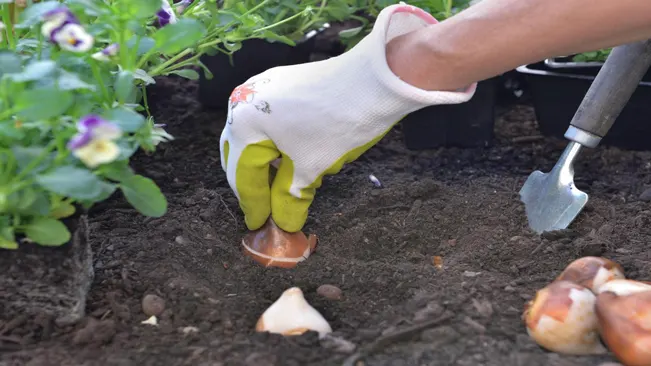
Tulips are perennials that grow from bulbs. Unlike seeds, bulbs contain a miniature flower and the food it needs to grow. This characteristic makes tulips relatively easy to cultivate, provided they are planted at the right time.
Best Time to Plant Tulip Bulbs
The ideal time to plant tulip bulbs is in the fall. Depending on your geographical location, this usually means anytime from late September to early December. The key is to plant the bulbs several weeks before the ground freezes. This timing allows the bulbs to establish roots before winter.
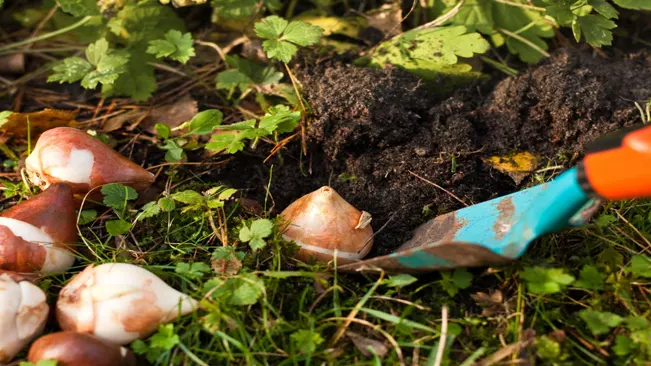
Zone-Specific Recommendations:
- Zones 3-5: Plant in late September to October.
- Zones 6-7: Planting is best in October to early November.
- Zone 8 and warmer: Plant in November to early December.
Why Fall Planting?
Tulips require a period of cold dormancy to bloom. Planting in the fall ensures that they receive enough chilling hours during the winter months. This cold period is essential for the biochemical processes that trigger flowering in spring.
Science of Cold Dormancy in Tulips
- Biological Requirement: Tulip bulbs need a cold dormancy period to initiate the biochemical processes that lead to spring blooming. This is a natural adaptation to their native climates, where cold winters are followed by spring growth.
- Chilling Hours: The bulbs require a specific number of chilling hours to break dormancy. This period of cold exposure typically ranges between 12 to 16 weeks at temperatures of 35 to 45 degrees Fahrenheit. Without this chilling period, tulips may either not bloom at all or produce weak, stunted flowers.
Why Fall is the Ideal Planting Time
- Natural Cycle: Planting in the fall mimics the tulip’s natural growth cycle. In their native habitats, tulip bulbs lie dormant underground throughout the winter and then sprout in the spring.
- Root Development: Fall planting allows the bulbs to establish a robust root system before the ground freezes. This root development is crucial for nutrient and water uptake, supporting healthy growth in spring.
- Temperature Regulation: The cooler temperatures of fall are ideal for planting because they are not too warm to induce premature sprouting and not too cold to damage the bulbs.
Impact of Climate and Geography
Mild Winter Areas: In regions with mild winters (where ground freezing is rare or brief), gardeners might need to artificially chill tulip bulbs by refrigerating them before planting. This ensures that the bulbs receive enough cold exposure.
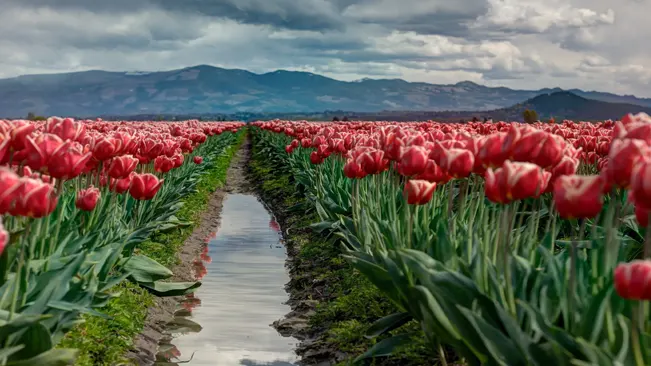
Severe Winter Areas: In very cold climates, mulching after planting can help protect the bulbs from extreme winter temperatures.
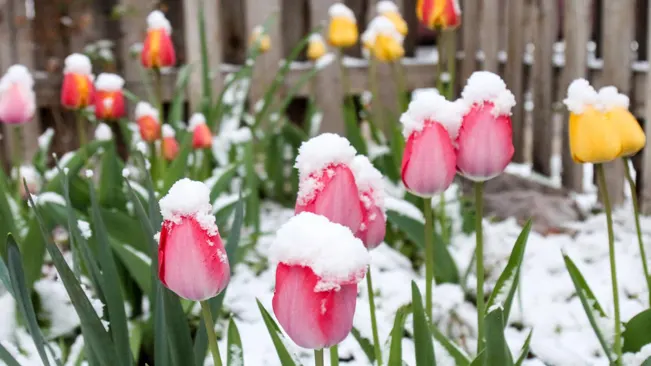
Importance of Timing
- Early Fall Planting: Planting too early in the fall can lead to premature sprouting, leaving the young shoots vulnerable to winter damage.
- Late Fall Planting: Conversely, planting too late in the fall might not give the bulbs enough time to establish roots before the ground freezes.
Soil and Sunlight Requirements
Tulips thrive in well-drained soil. To prepare your garden, loosen the soil and mix in some compost to improve drainage if necessary. Choose a planting site that receives full to partial sunlight. Adequate sun exposure is crucial for healthy blooms.
Soil Requirements for Tulips
Well-Drained Soil: Tulips flourish in soil that drains well. This means the soil should allow water to percolate through easily without retaining excess moisture, which can lead to bulb rot.
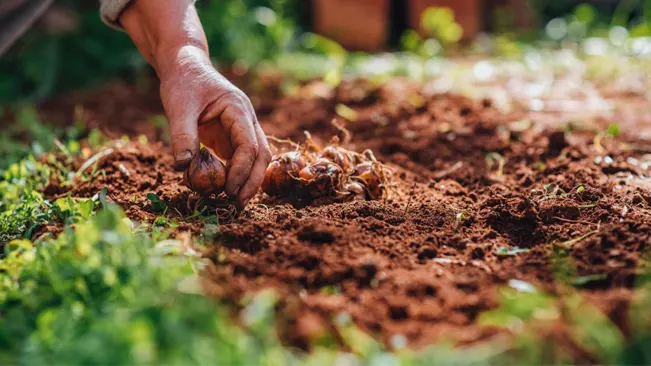
Soil Preparation: Before planting, it’s important to loosen the soil to a depth of at least 12 inches. This helps the roots of the tulip bulbs grow without obstruction. If the soil is heavy or clayey, it’s recommended to amend it.
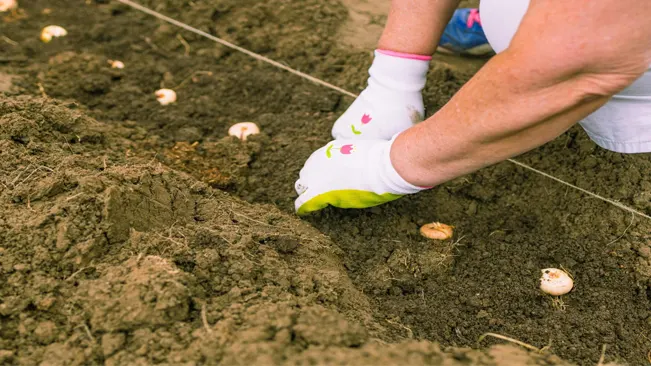
Improving Soil Drainage: You can improve soil drainage by adding organic matter like compost, well-rotted manure, or leaf mold. These materials not only enhance drainage but also improve soil fertility.
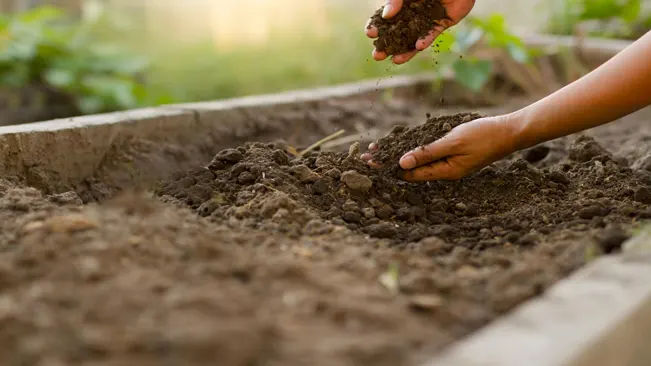
- Soil pH: Tulips prefer a slightly acidic to neutral soil pH, generally between 6.0 and 7.0. If your soil is too alkaline, you can amend it with sulfur or peat moss.
- Nutrient Requirements: While tulips are not heavy feeders, they do benefit from soil that is moderately fertile. An initial incorporation of a balanced, slow-release fertilizer during planting can be beneficial.
Sunlight Requirements for Tulips
Sunlight Exposure: Tulips need full to partial sunlight to thrive. This means they should receive at least 6 hours of direct sunlight per day. The more sunlight they receive, especially in the morning, the better they will grow and bloom.
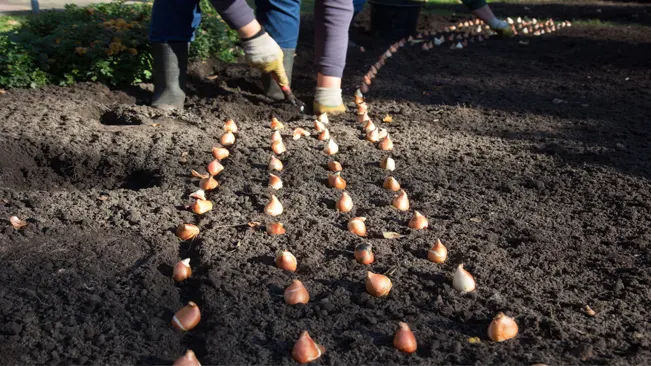
Shade Tolerance: While tulips can tolerate some shade, too much shade can lead to weak stems and poor blooming. In heavily shaded areas, tulips may not perform well.

Location Planning: When choosing a location for planting tulips, consider the movement of the sun throughout the day and the shading patterns in your garden. Avoid areas that are shaded by large trees or buildings, especially during the morning.
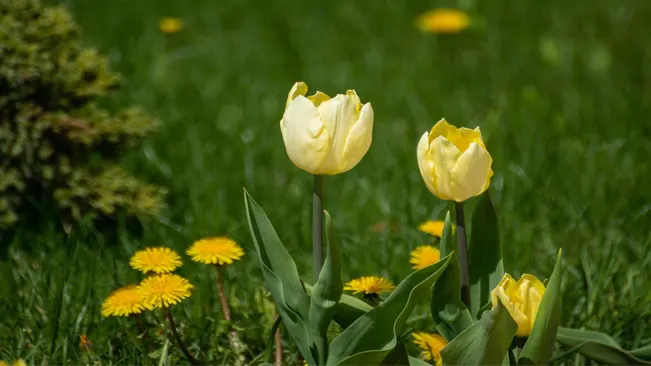
Heat Sensitivity: In areas with very hot climates, some afternoon shade can be beneficial to prevent the bulbs from overheating, especially after the blooms have opened.

Planting Depth and Spacing
Plant tulip bulbs about 6 to 8 inches deep, with the pointy end up. Space them about 4 to 6 inches apart. This spacing allows enough room for the bulbs to grow without competing for nutrients and water.
Planting Depth
Why 6 to 8 Inches Deep?: Tulip bulbs are planted deeper than many other bulbs. This depth is essential for several reasons:
- Protection from Temperature Fluctuations: Being deep in the soil insulates the bulbs from changes in surface temperature, providing a more stable environment.
- Support for Growth: Deep planting gives the tulip stems a strong foundation. This support is necessary because tulip stems can become quite tall and heavy, especially those of larger, showier varieties.
- Prevention of Uprooting: Deeper planting helps prevent the bulbs from being pushed up out of the ground due to freeze-thaw cycles in the soil.
- Protection from Animals: A deeper planting can make it more difficult for animals like squirrels and mice to dig up and eat the bulbs.
- Pointy End Up: The pointy end of the bulb is where the stem and flower will grow from. Planting it upward ensures that the tulip can grow through the soil surface without obstructions.
Spacing
Why 4 to 6 Inches Apart?: Proper spacing is essential for several reason
- Nutrient Availability: Each bulb requires access to nutrients in the soil. Closer spacing can lead to competition for these nutrients, potentially impacting the health and bloom of the tulips.
- Adequate Room for Growth: Tulips need space to expand as they grow. Overcrowding can inhibit their growth and reduce airflow around the plants, which can lead to disease.
- Visual Appeal: From an aesthetic viewpoint, this spacing is ideal for creating a full, yet not overcrowded, display of tulips. It allows each tulip to be distinct while still contributing to a lush look in the garden.
Aftercare
Once planted, water the bulbs thoroughly. This initial watering helps settle the soil around the bulbs. During the growing season, ensure the soil stays moist but not waterlogged. Overwatering can cause the bulbs to rot.
Conclusion
Planting tulip bulbs at the right time in the fall sets the stage for a spectacular spring display. With a little preparation and care, you can enjoy the beauty of tulips in your garden year after year. With proper planting and care, your tulips will start to emerge in early spring. The timing of blooms depends on the variety and your climate, but most tulips bloom from early to late spring.
FAQs (Frequently Asked Questions)
- When is the best time to plant tulip bulbs?
The ideal time to plant tulip bulbs is in the fall, typically from late September to early December, depending on your climate zone. - Why is fall the preferred season for planting tulips?
Fall planting gives the bulbs a chance to establish roots before the ground freezes and ensures they undergo the necessary cold period during winter to bloom in spring. - Can I plant tulip bulbs in the spring?
Planting in spring is not ideal for tulips. They require a cold dormancy period to bloom, which they won’t get if planted in the spring. - How late can I plant tulip bulbs?
You can plant tulip bulbs until the ground freezes. In many regions, this means you can plant as late as early December. - Does the planting time vary by geographical location?
Yes, in cooler northern climates, plant earlier (late September to October), and in warmer southern climates, plant later (October to December). - What happens if I plant tulip bulbs too early?
If planted too early, bulbs might sprout prematurely, and the young shoots could be damaged by winter cold. - What should I do if I forgot to plant my tulip bulbs in the fall?
If you miss the fall window and the ground isn’t frozen, plant them as soon as possible. Alternatively, you can store them in a cool, dry place and plant the following fall. - Can I plant tulip bulbs in winter?
If the ground is not frozen and you can work the soil, you can still plant the bulbs. However, the blooms may not be as vigorous in the first year. - Is it necessary to plant tulip bulbs every year?
Tulips can be perennial, but many gardeners treat them as annuals due to diminished blooms in subsequent years. For consistent displays, many plant new bulbs each year. - What’s the best way to ensure my tulips bloom in the spring after planting?
Ensure proper planting depth (6-8 inches), spacing (4-6 inches apart), and plant in a location with good drainage and full to partial sunlight. Also, avoid watering excessively after planting.

Kristine Moore
Forestry AuthorI'm Kristine Moore, a seasoned garden landscaping professional with over 30 years of experience. My extensive career has been dedicated to transforming outdoor spaces into stunning, sustainable landscapes. With a deep understanding of horticulture, design principles, and environmental stewardship, I have become a respected figure in the field, known for creating harmonious, visually appealing, and eco-friendly gardens. My commitment to excellence and continuous learning in landscaping trends and techniques has solidified my reputation as an expert in garden design and implementation.



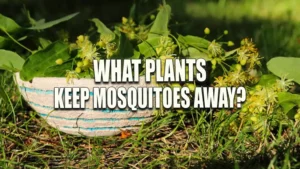









Leave your comment